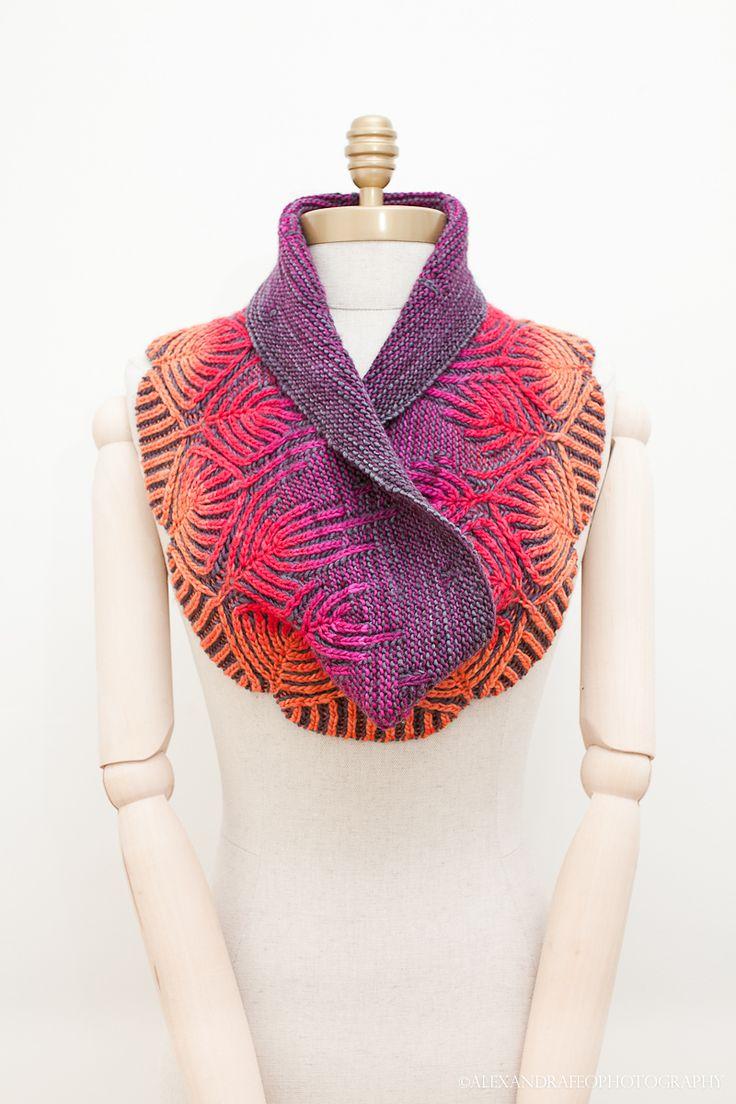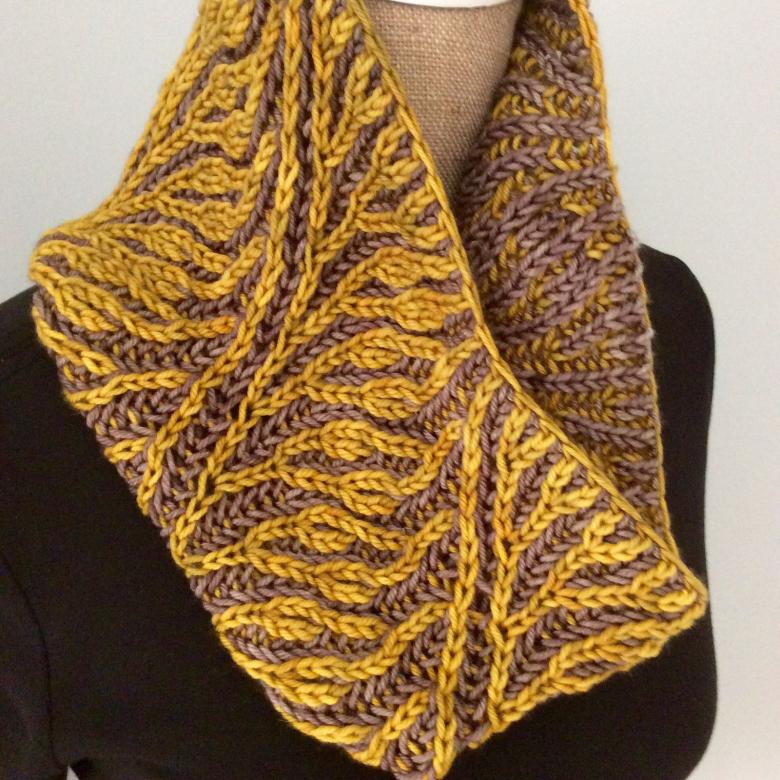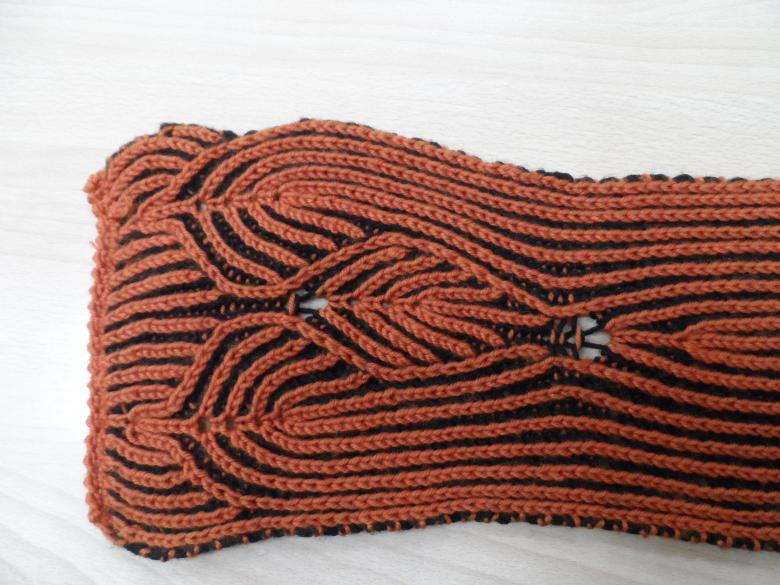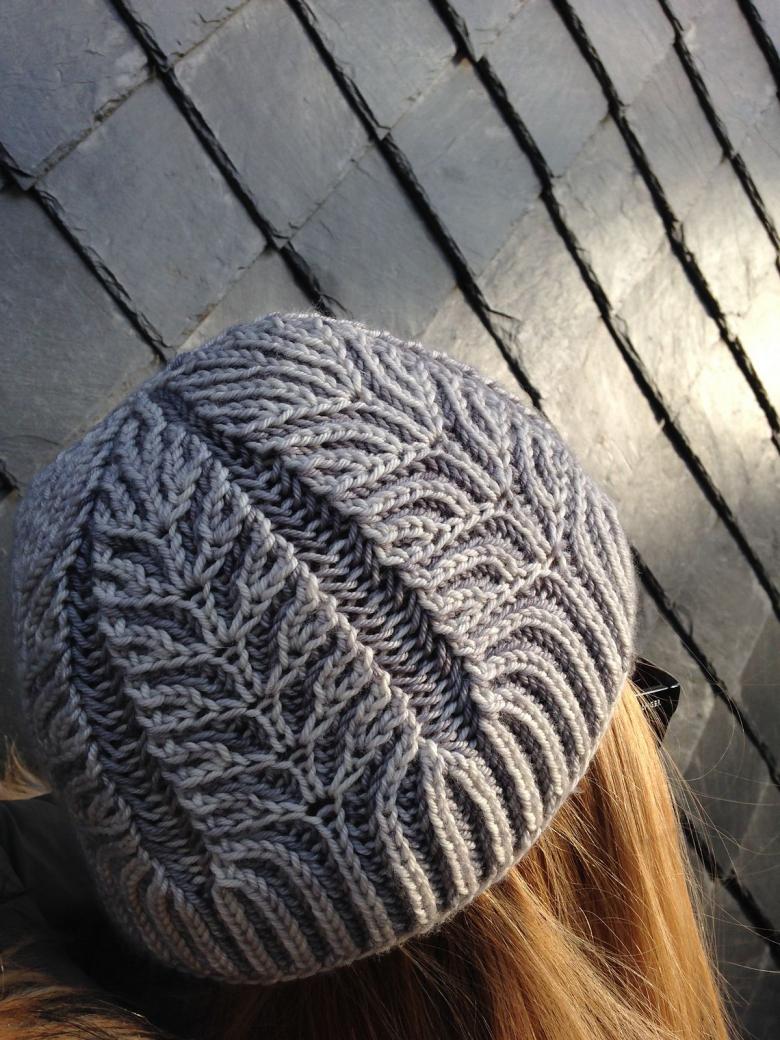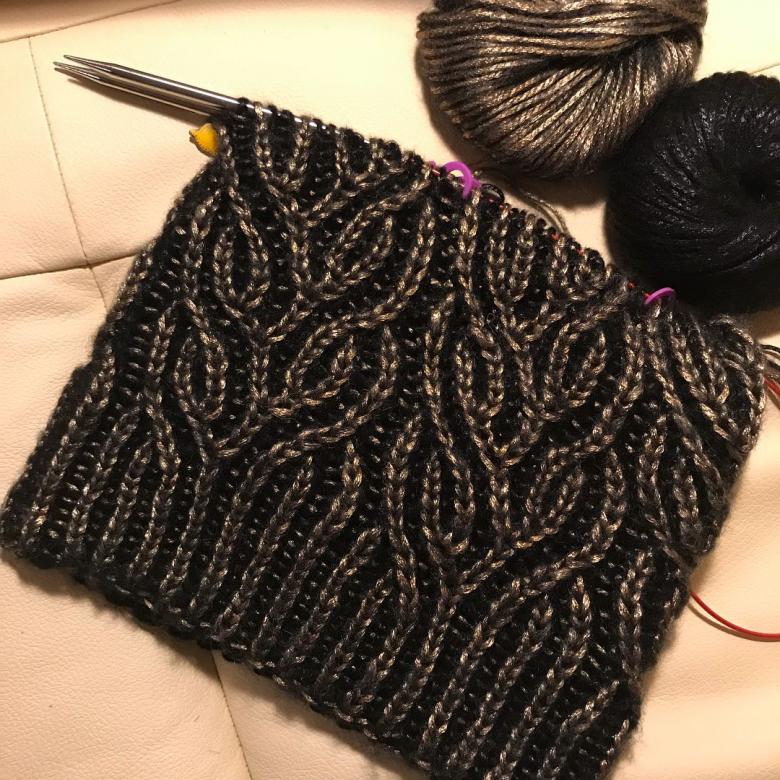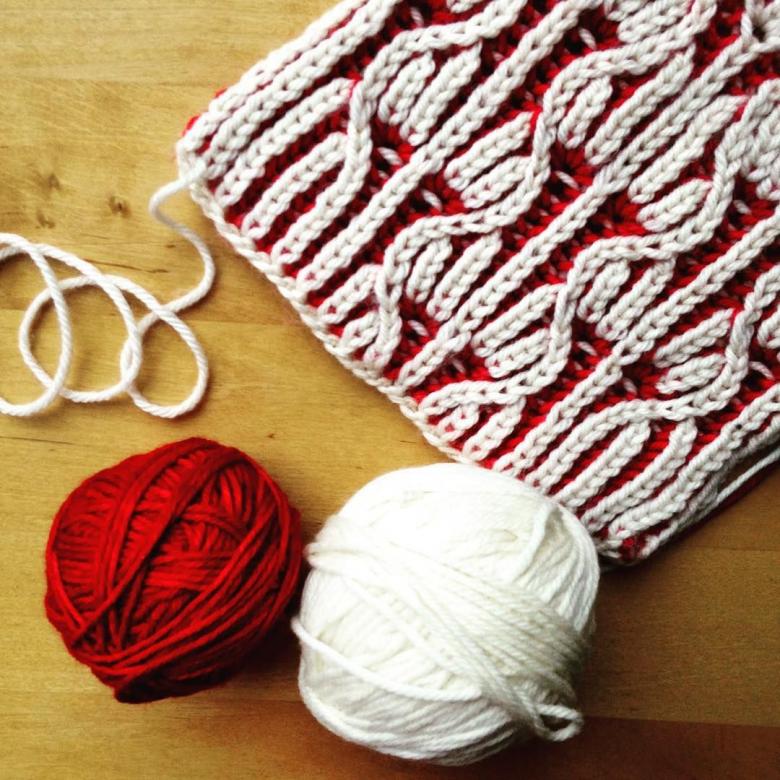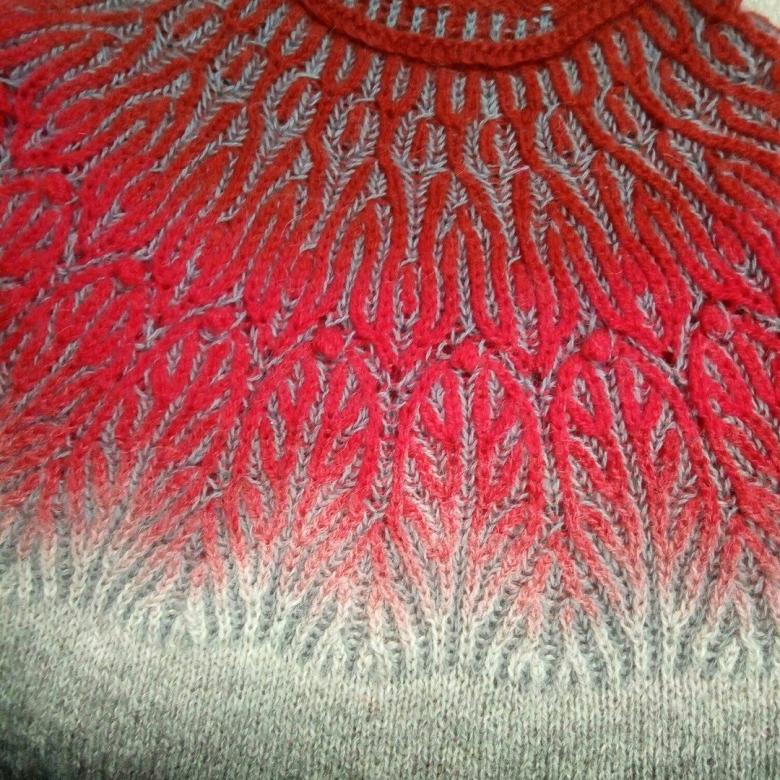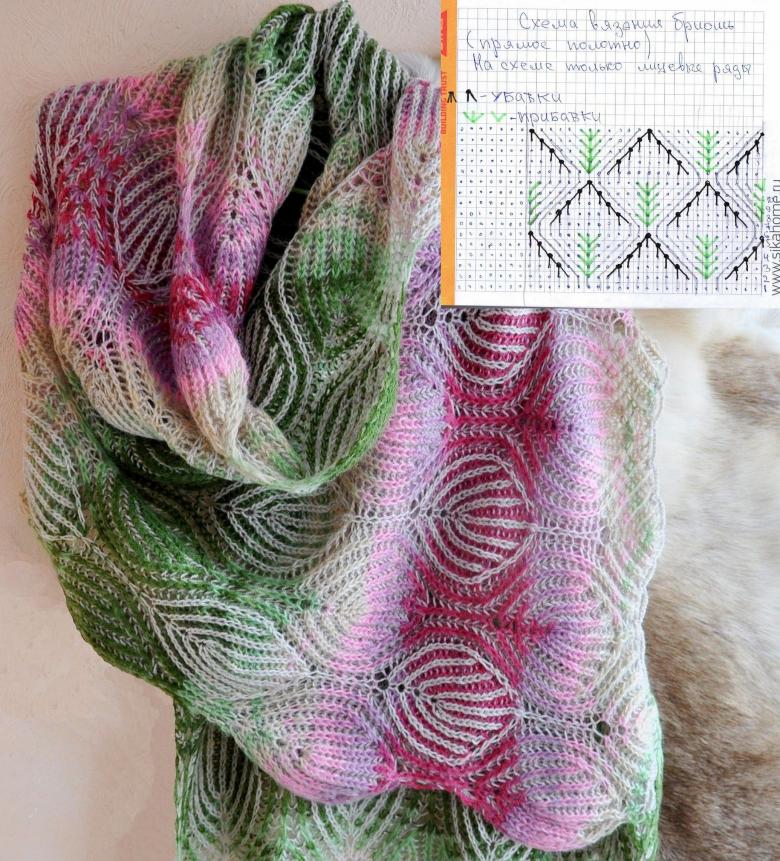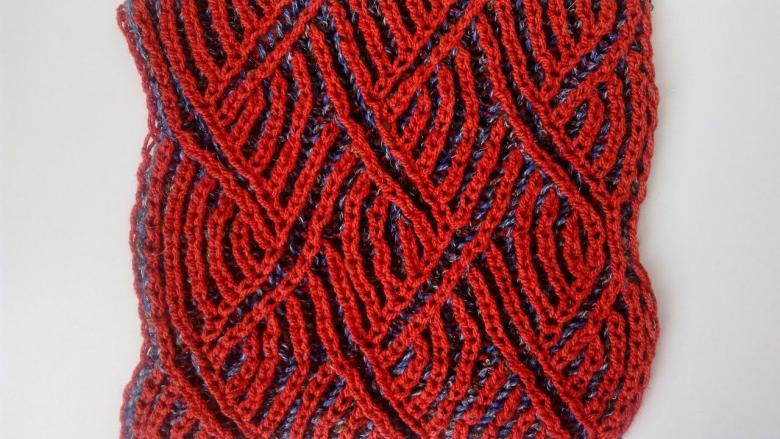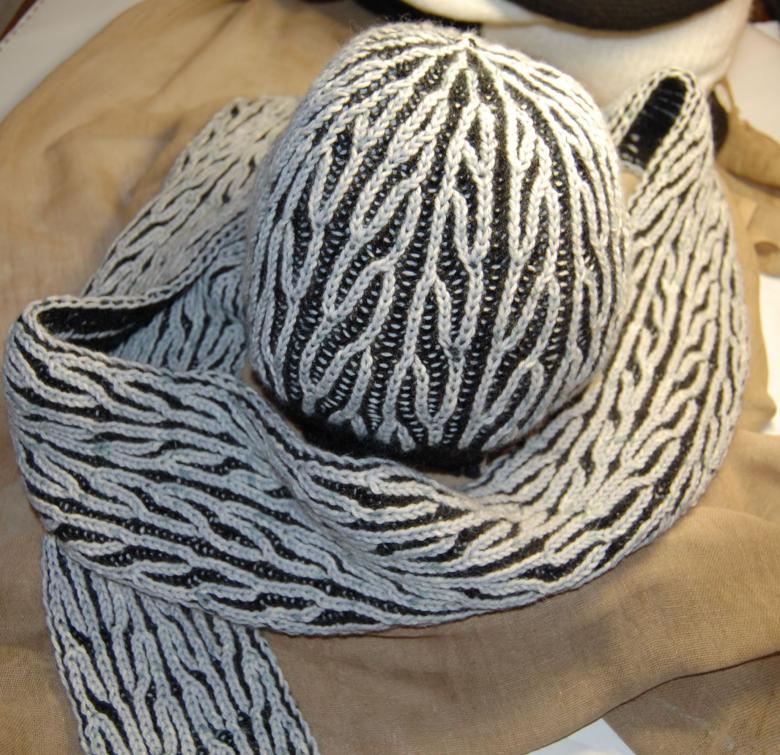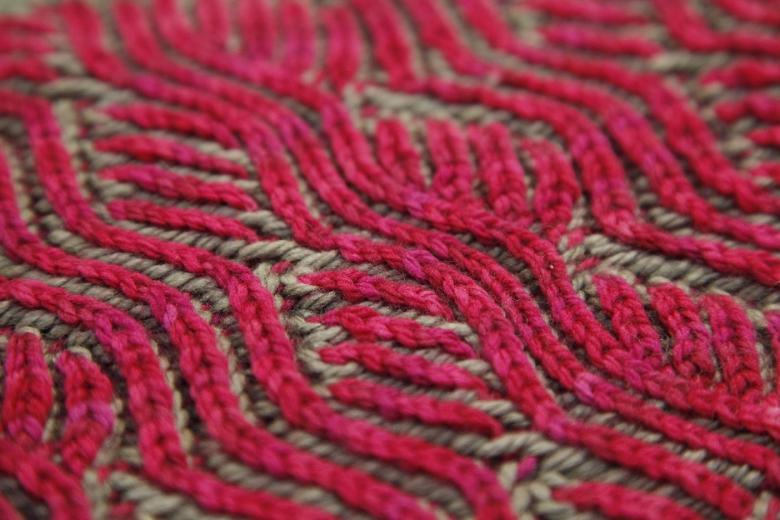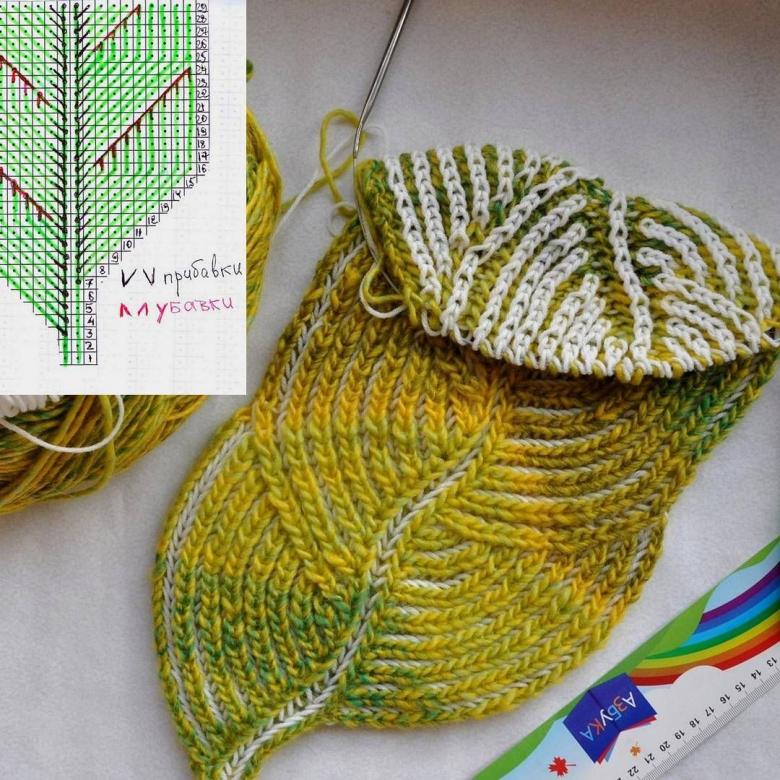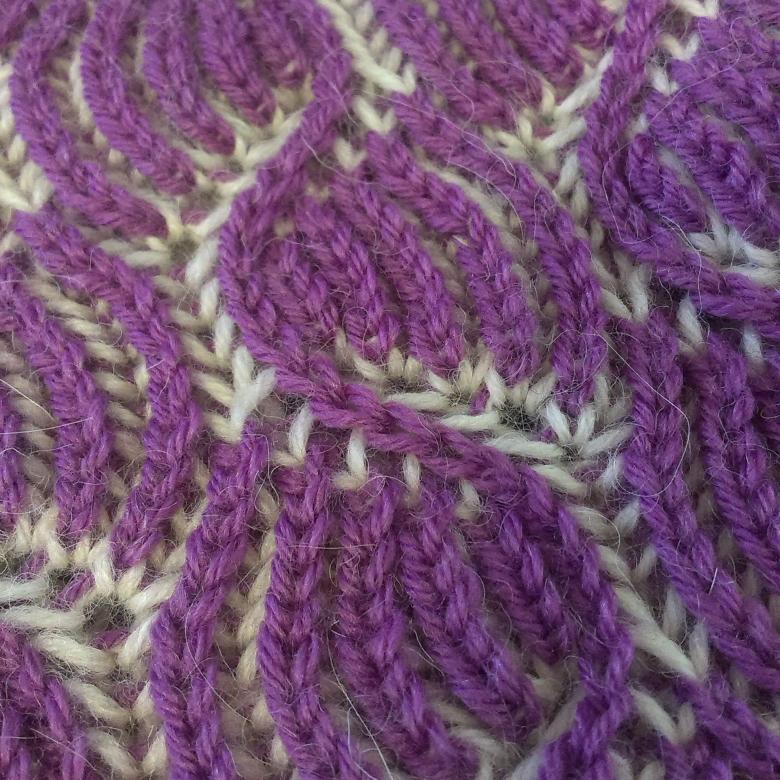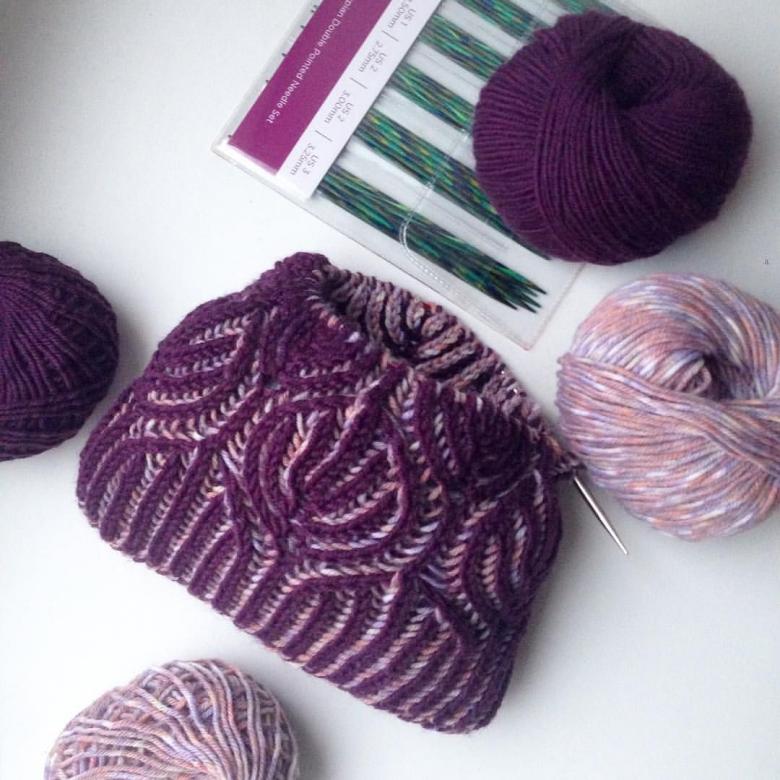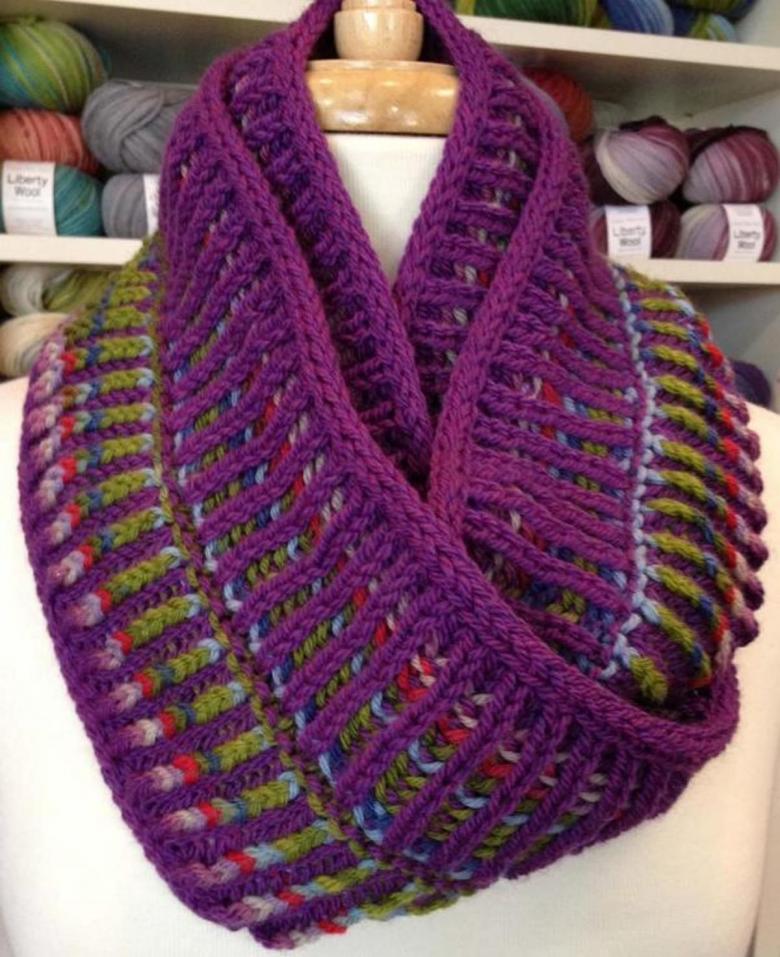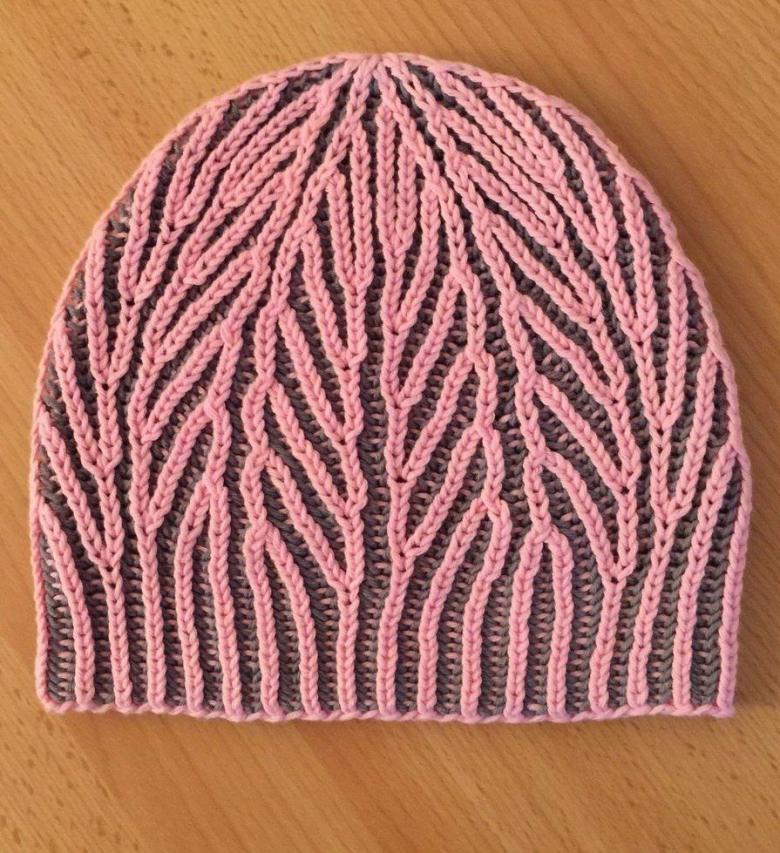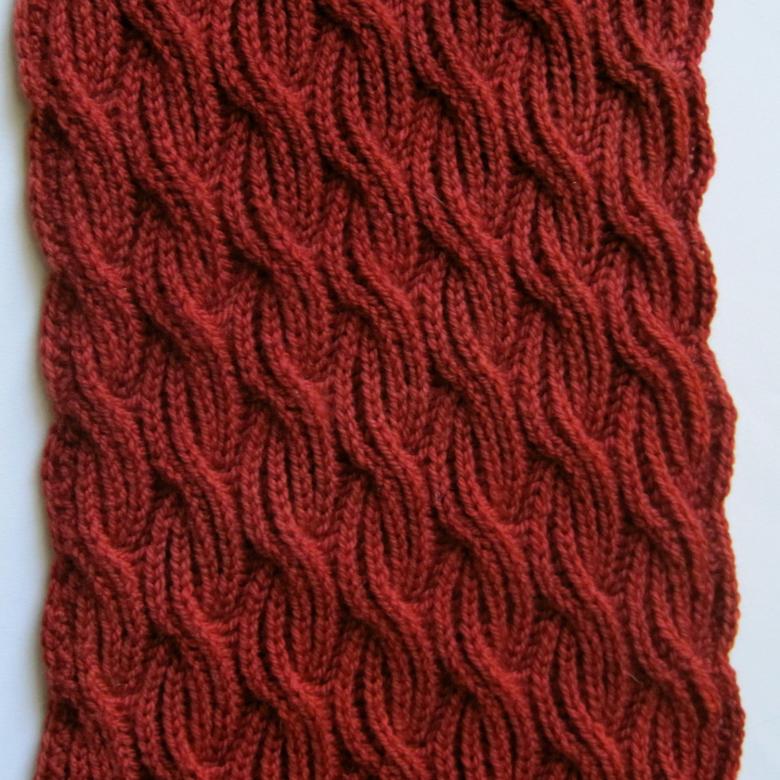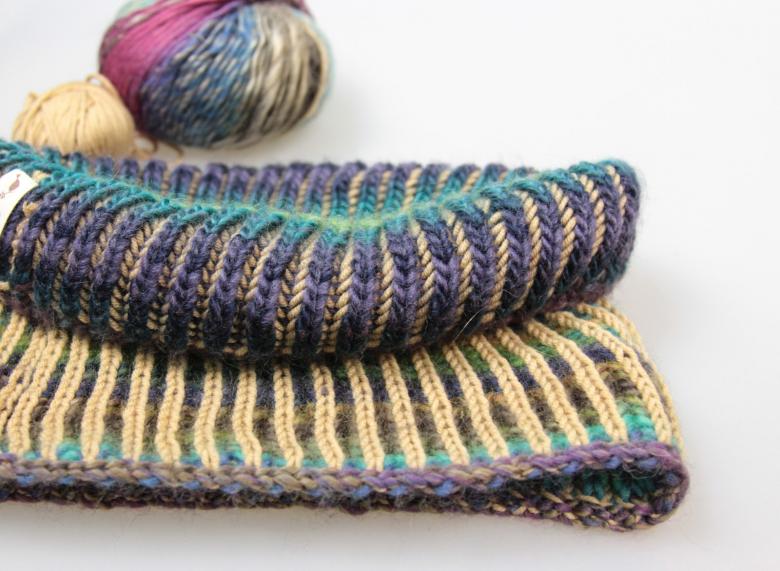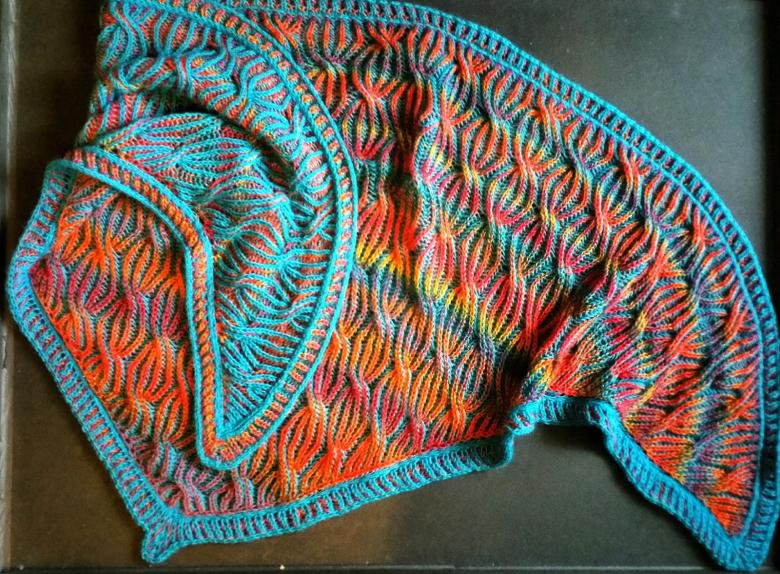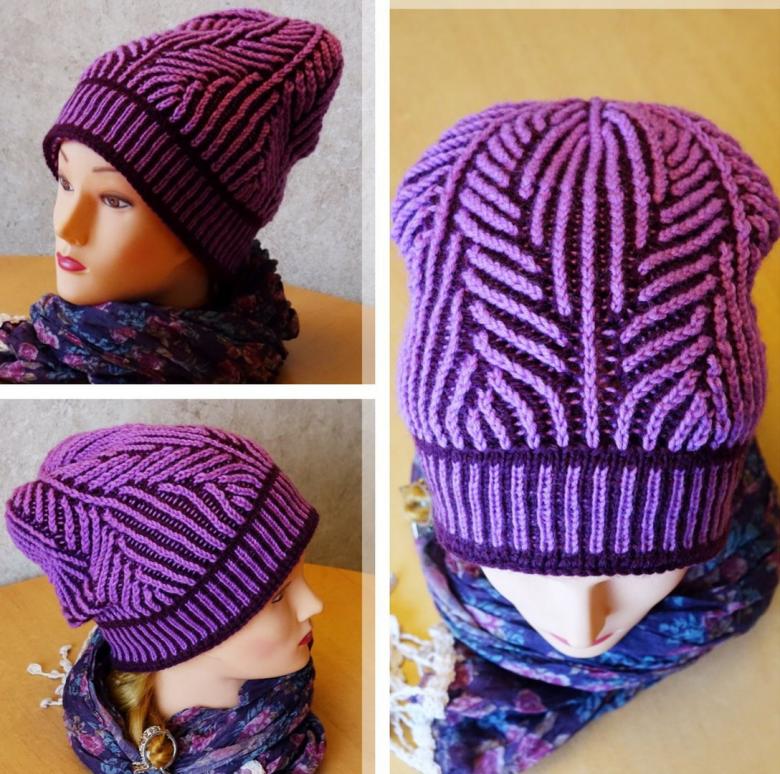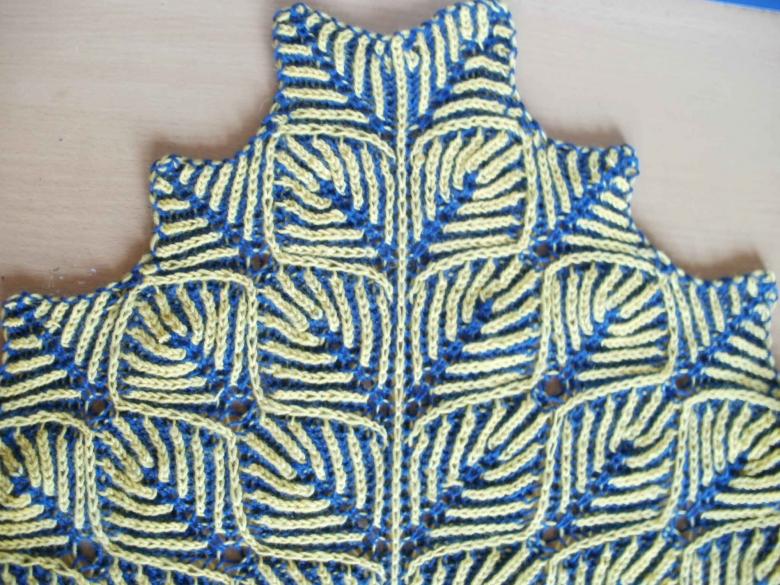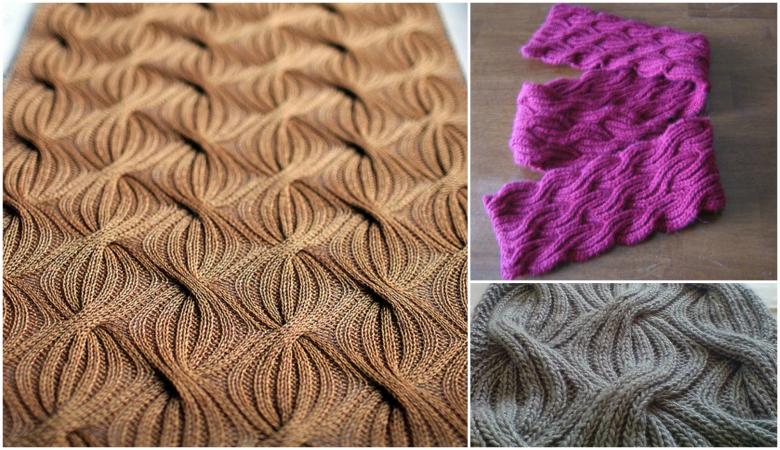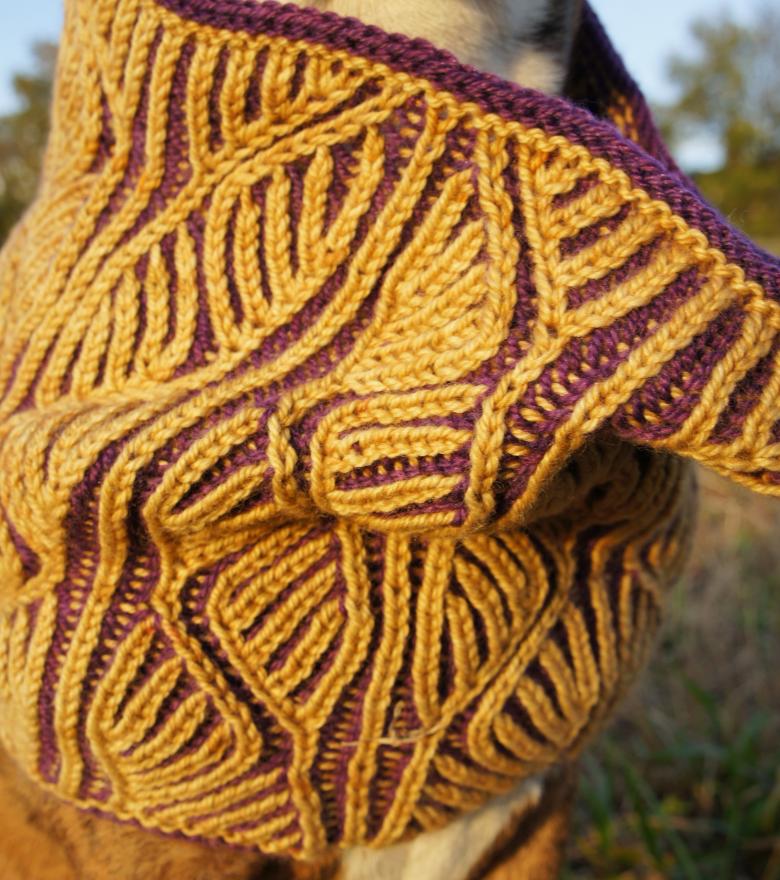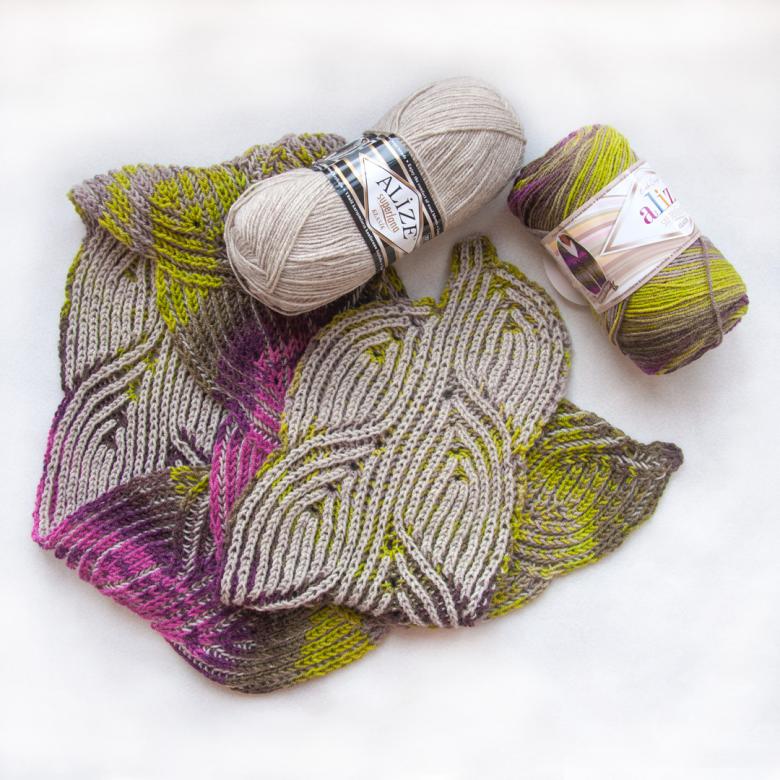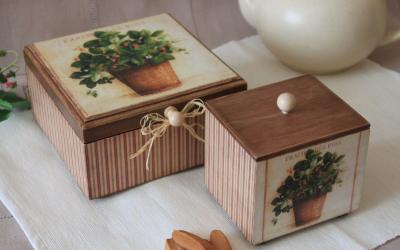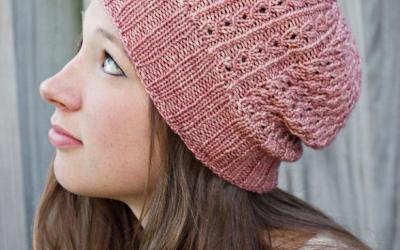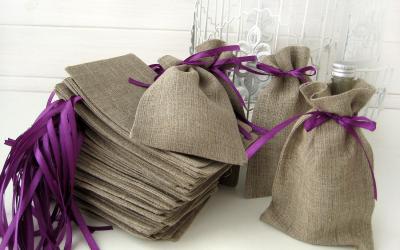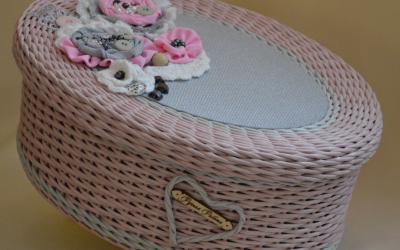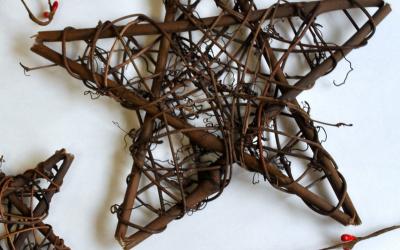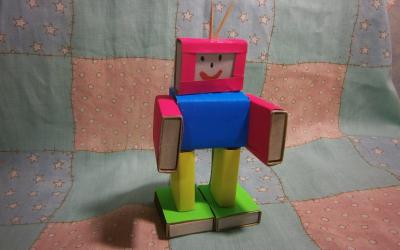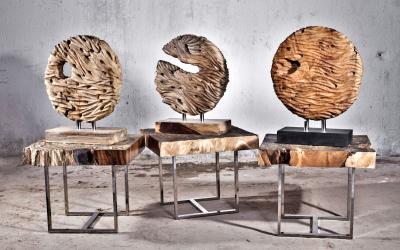Knitting brioche knitting - step by step master class for beginners, photo ideas, tips
Knitting in the brioche technique looks very original, both in multicolored and monochrome. It differs from other types of knitting with scissors, but it is easy to master. In order to knit such strips, you need to master the English patent elastic and learn how to use it in a certain way.
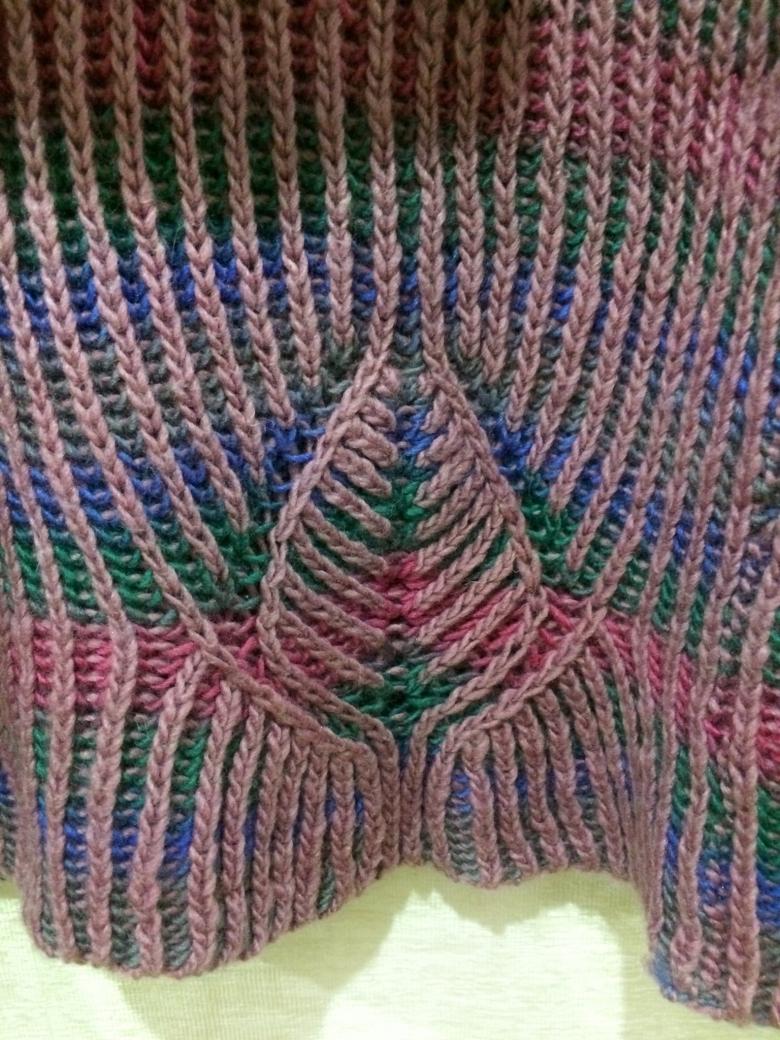
The technique of brioche is relatively new and immediately gained great popularity among needlewomen. It is necessary to knit in different colors in different directions, using a patent elastic band. There are two kinds of patent loops, which are used in the brioche technique:
- A loop is simply taken off;
- The buttonhole is knitted from the previous row.
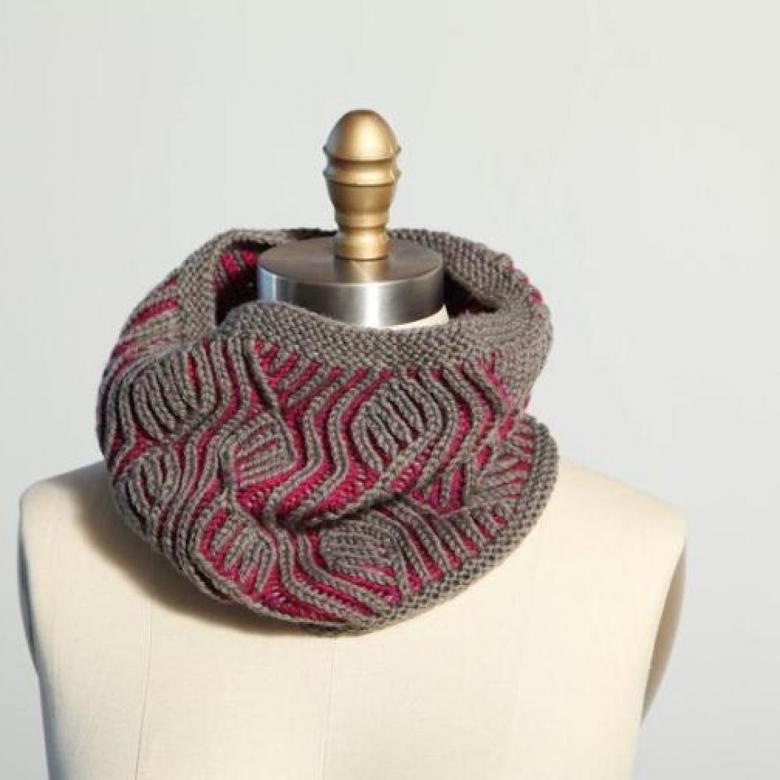
In both cases, you get an English elastic, which creates the volume of the product. Binding a loop from the bottom row with spokes is less common, but to teach this variant of knitting brioche is also worthwhile when the needlewoman wants to take a master class.

This knitting technique is used today in the manufacture of various hats and accessories:
- hats;
- scarves;
- snoods.
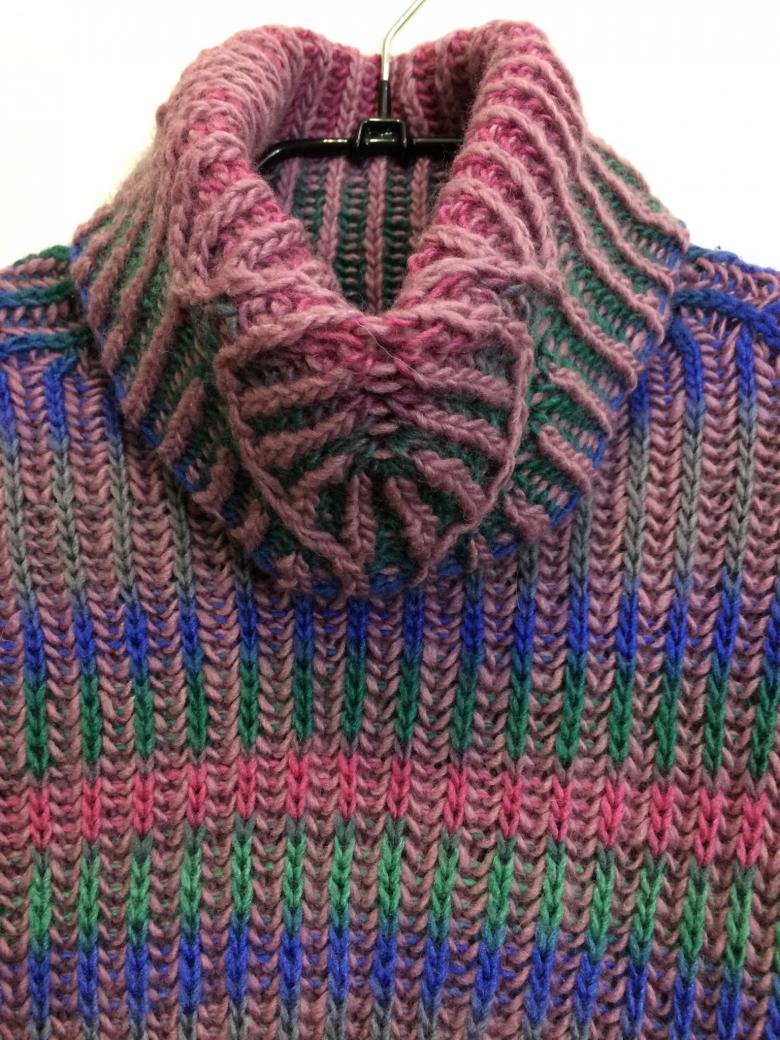
Experienced knitters can try to knit in this way and larger things:
- cardigans;
- sweaters;
- pullovers.

In the voluminous knitting, which is obtained by using the English elastic, such things will look attractive and perfectly warm in the cold season.
Features of brioche knitting
Using brioche knitting makes it possible to get a double cloth pattern, which resembles arches, accordion, or fish scales. Thanks to the lowered threads in certain places, the knitted fabric turns out double and voluminous. In products related to the technique of brioche will be warm and comfortable in the cold season.
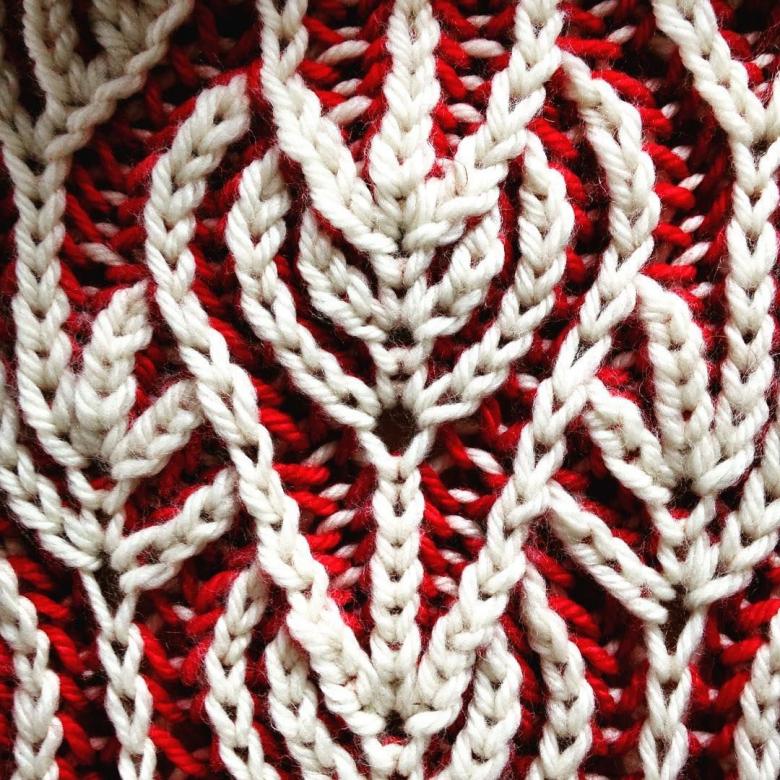
This knitting is also good that fits under any thread. Best of all, brioche knitting is suitable for clothes of a small volume, which will form a figure or head. Plaid in such a technique will not look nice. It will be warm, but shapeless.

The resulting knitted fabric stretches well. It takes twice as much thread, as the product is obtained as a double. Knit in this technique can be different things that will have a frame, irlli put on the body.

This knitting technique is perfect for knitting warm things, designed for autumn or winter. Technique brioche on needles can be knitted:
- gaiters;
- socks;
- uggs;
- dresses;
- skirts;
- mittens;
- mittens;
- hats of various kinds;
- pullovers;
- berets;
- tight sweaters with high necks.

Things are not only very warm, thanks to the double knitting, but also beautiful. They will sit well on the figure, creating the desired volume.
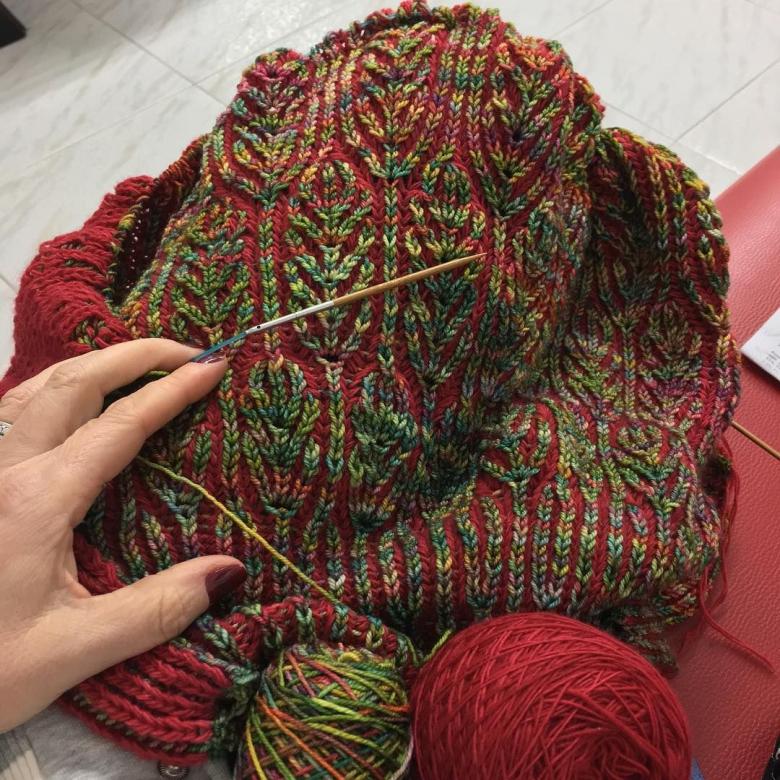
The history of the origin of this technique is not exactly known. Some tend to believe that it came from the Middle East to Europe, others tend to see it as a French trace. At least the name itself has French roots.
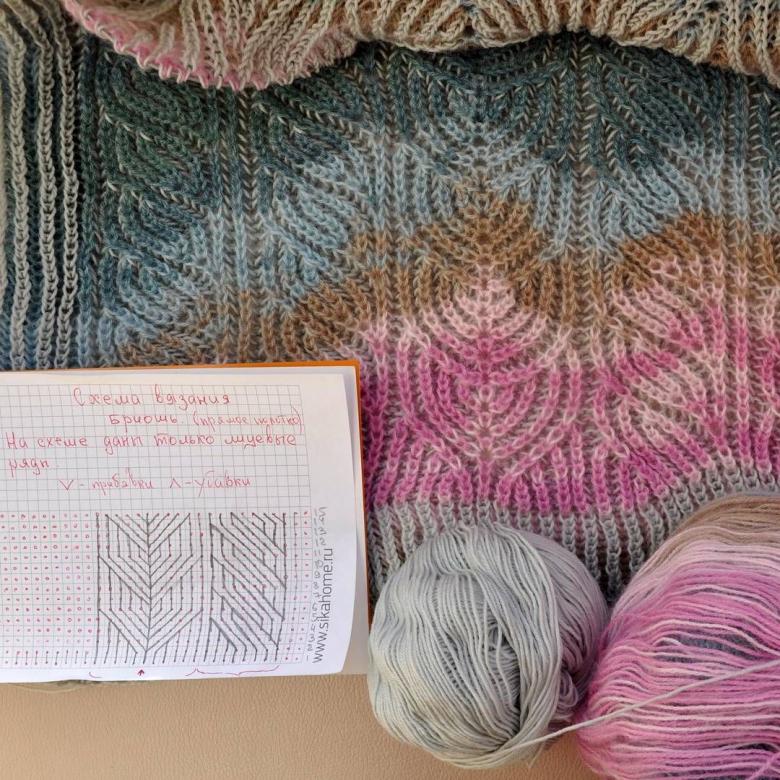
In one version it can be translated as "mistake," in another as a multi-layered brioche.
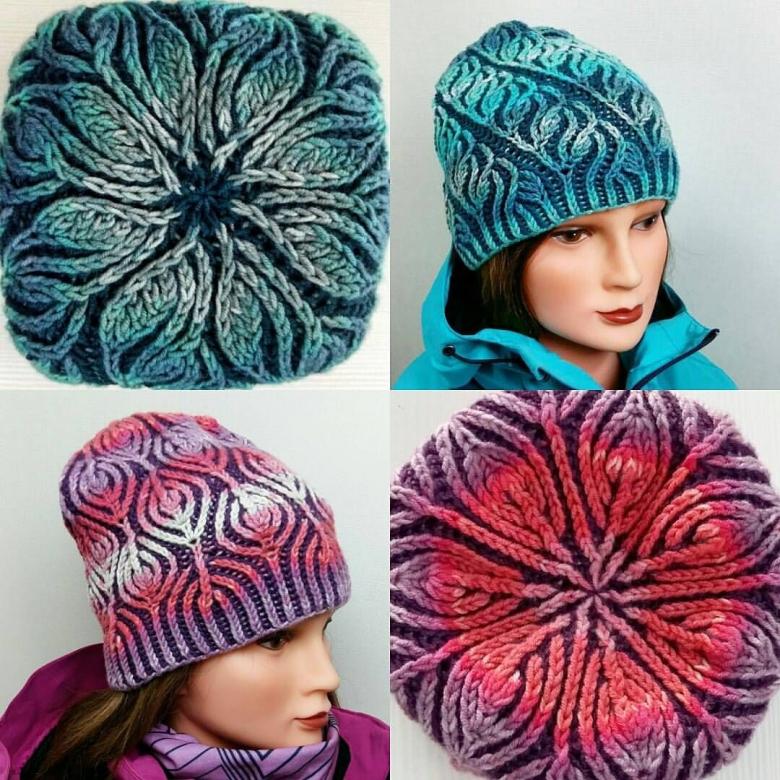
Brioche Technique Master Class
The brioche technique involves the use of needles when knitting. From the first time it seems very difficult for beginners, but it is not so in fact. After the first lesson, beginner knitters master the English stitch and the basics of brioche knitting.

If you use different colors when knitting brioche for beginners, it will be more interesting and fun to learn, because the colorful fabric does not cause eye fatigue and allows you to quickly master brioche knitting.
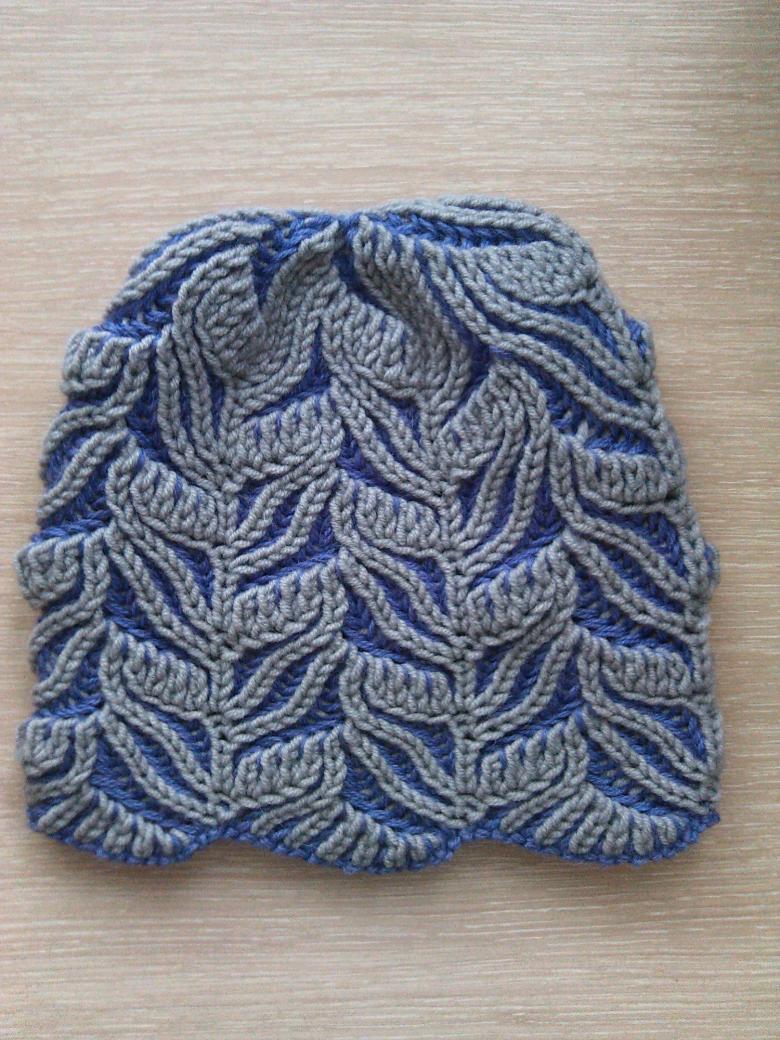
Beginner knitters should study brioche knitting in the course of making some small things. This is best done with a small scarf. Before you start knitting the product itself, it is worth pre-knitting about two samples, which will help you properly learn the technique of brioche on needles.
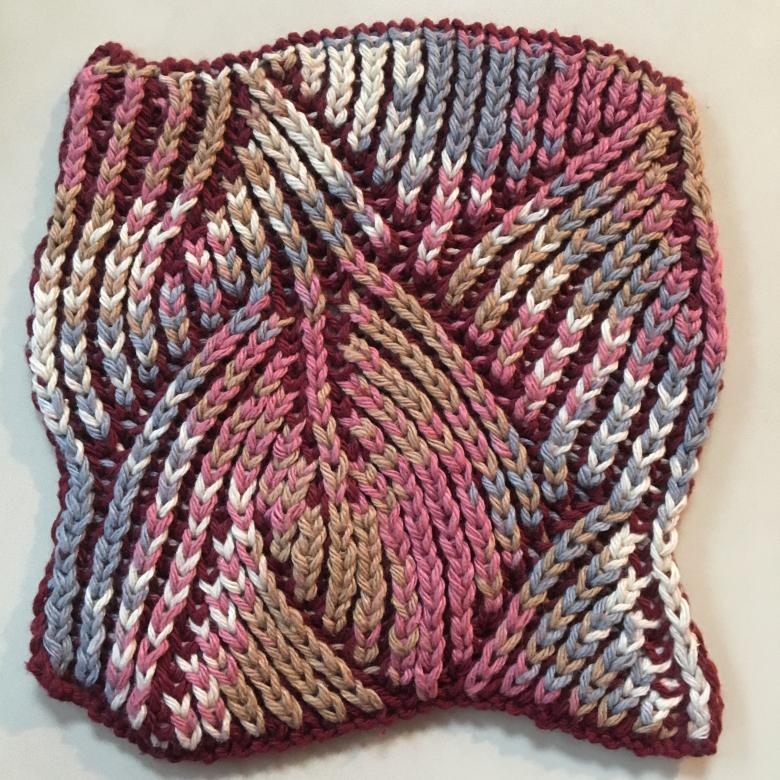
What kind of thread and needles to choose for knitting brioche
Above bol said that in this knitting technique any yarn can be used. In practice, this is not quite true. Do not take for work too fluffy yarn: angora or mohair. Knitting makes the product voluminous, and in this version the thing will seem too bulky.

When knitting brioche, a warm, or winter yarn is usually used:
- natural wool;
- wool with acrylic thread;
- wool yarn with silk, polyamide or nylon.
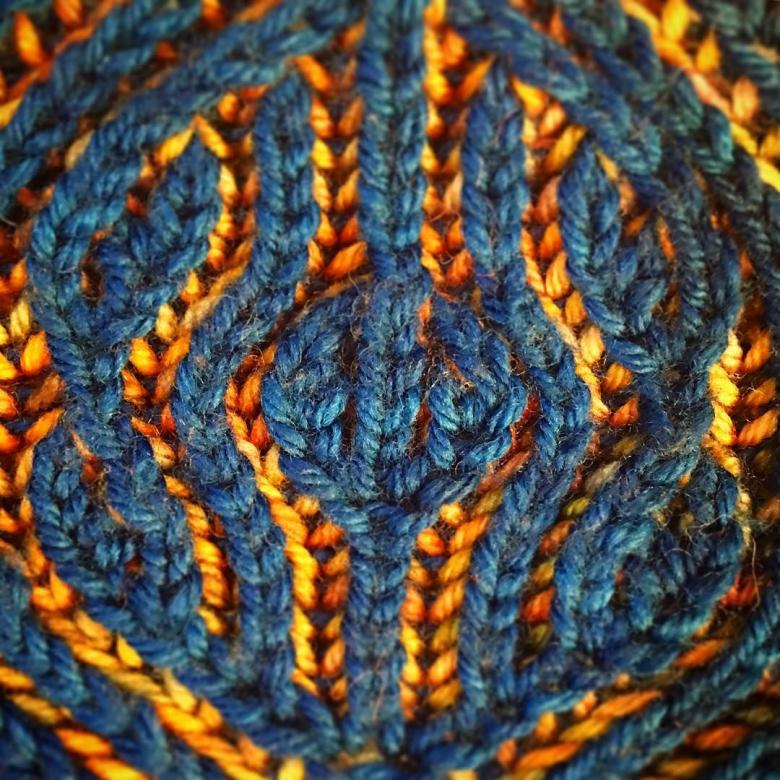
Pure wool wears out quickly, and artificial yarn gives it a long wear life.
You can also knit in the brioche technique with acrylic yarn. Such material will not shed when washed, which is important if you knit a multicolored piece. Such material will not burn out in the sun, it washes well and holds its shape.
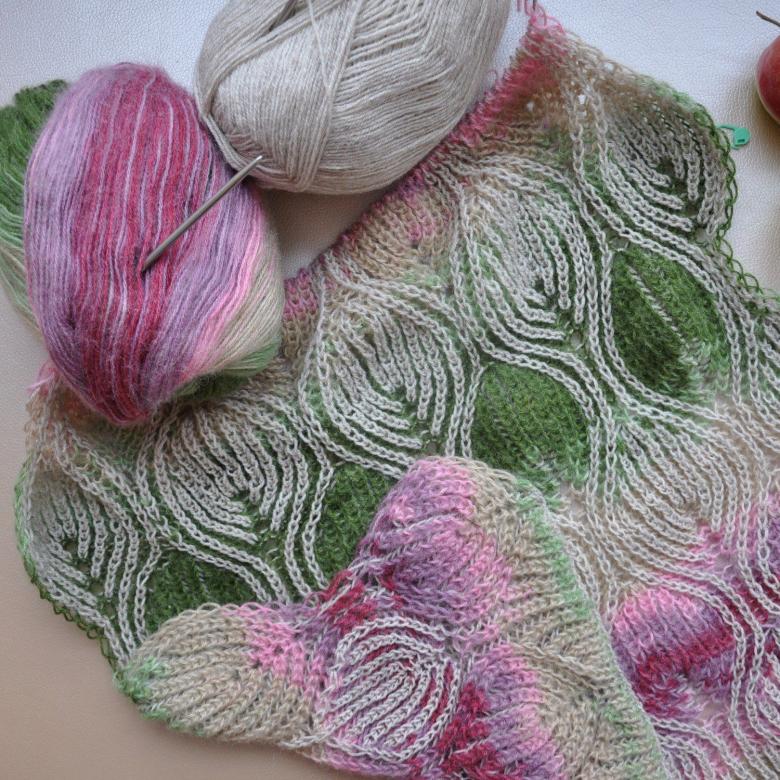
Fluffy wool does not allow you to fully reveal the texture of the knitting itself, which turns out quite embossed and beautiful. In addition, the eye on such a product during knitting and subsequent wear will be tired because of the abundance of voluminous elements.

Brioche knitting threads should have a soft texture. The structure of the thread should be processed in the technique of superwool, also called wool lasser. If the thread is medium or strong twist, the product will have a beautiful and spectacular pattern, the relief of the pattern will be clear and distinct.
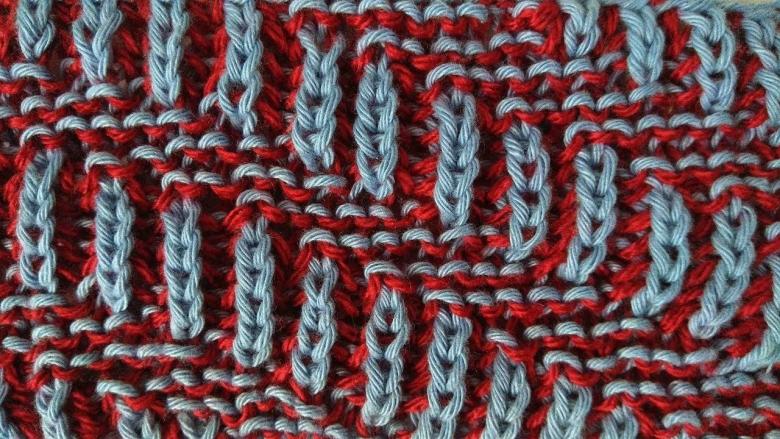
You need twice as much thread for this kind of knitting, because you get a voluminous rubber band, which is very different from the usual rubber bands, crochet, and even braids. Usually you need twice as much thread for this English elastic. You can also use a sample to calculate, which must first be measured, and then by multiplying the length of the sample by the number of rows to get the size of the threads required.
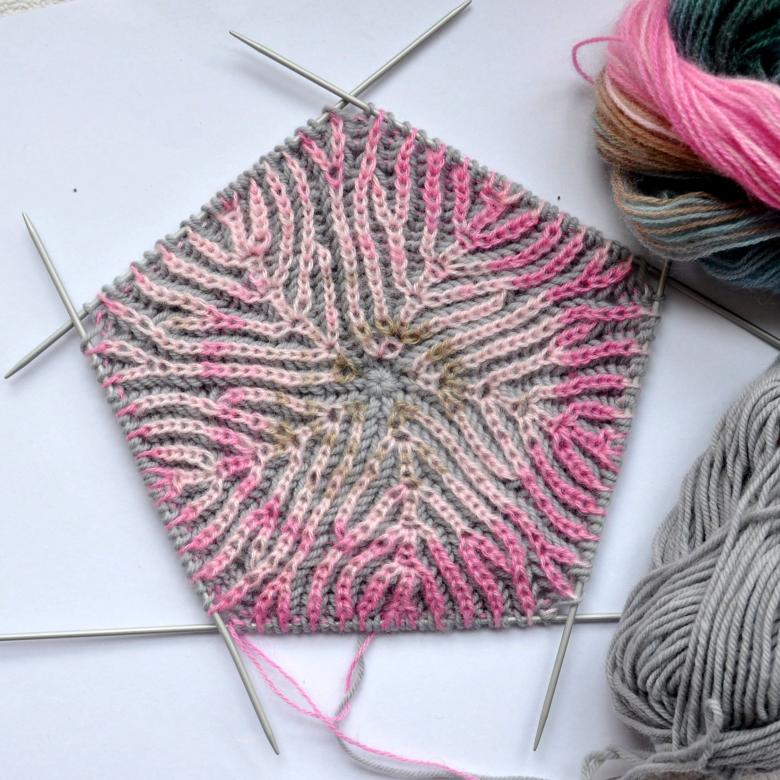
For hats and scarves use needles #3 and #4. To make the pattern look good, you should knit a dense cloth. If the performance is loose, the product does not turn out beautiful and warm. For the brioche technique you should always take a smaller size needles than for a regular English elastic.
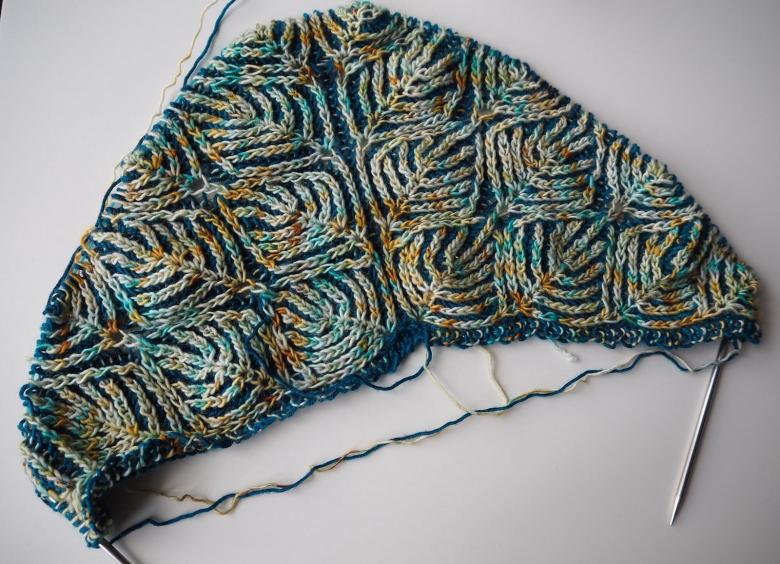
At the heart of brioche knitting is a patent elastic: a beginner's guide to the brioche technique
This knitting is the same on the right and on the wrong side. The texture of the fabric should be smooth and clear. The knitting has a reinforced relief and puffiness. There are two ways to knit brioche: the elimination stitch, or the English stitch. Some people mistakenly think an English elastic is something else. In fact, it is not.
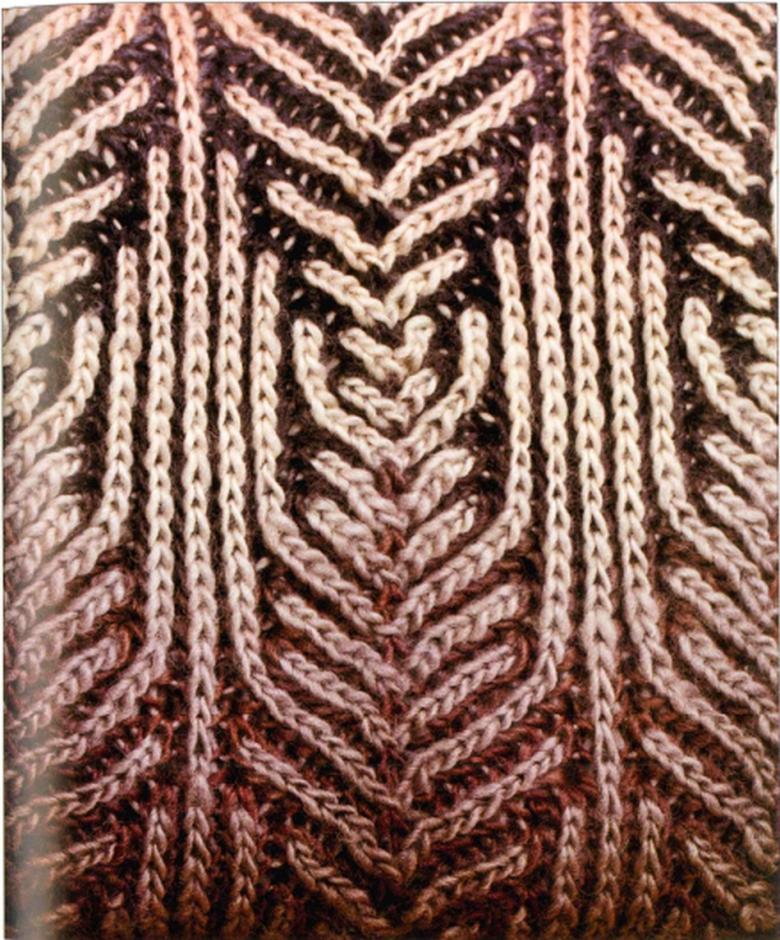
The knitting in the stripped loop variant is exactly the same as the English stitch. In this case, as in the patent stitch, the wrongs are never knit, but simply taken off with the spokes.

When knitting with an English stitch, an odd number of loops are put on the needles. The first front row begins with the first crochet stitch, which is not knit, removed on the spokes. Then you need to repeat the following algorithm: to weld a front stitch, then one stitch is simply removed and make a normal cast on. The last strap stitch is to be sold as the wrong stitch. The penultimate stitch before the edge stitch should be knitted as a right stitch. In this case the edges will be tight.
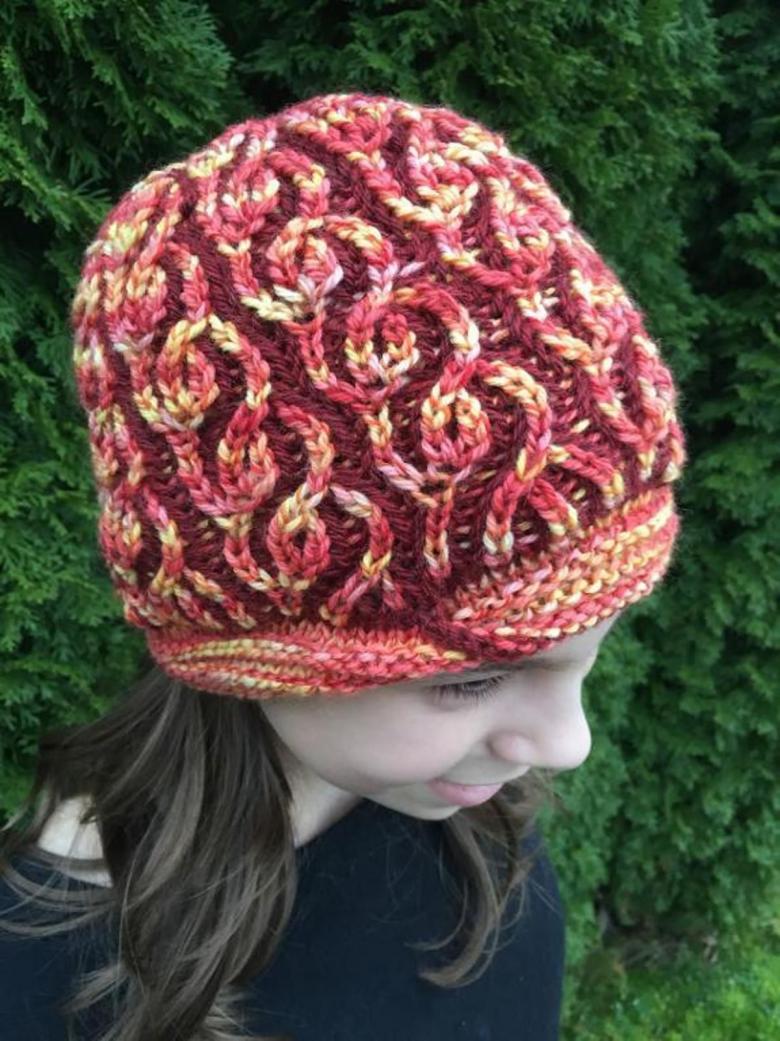
In the back row, the stitches are knitted the other way around: the front stitch is cast off and the back stitch is cast off and the cast-off stitch is cast on.
In the front and back rows, all the stitches are knitted with a stitch, which gives the effect of double knitting.
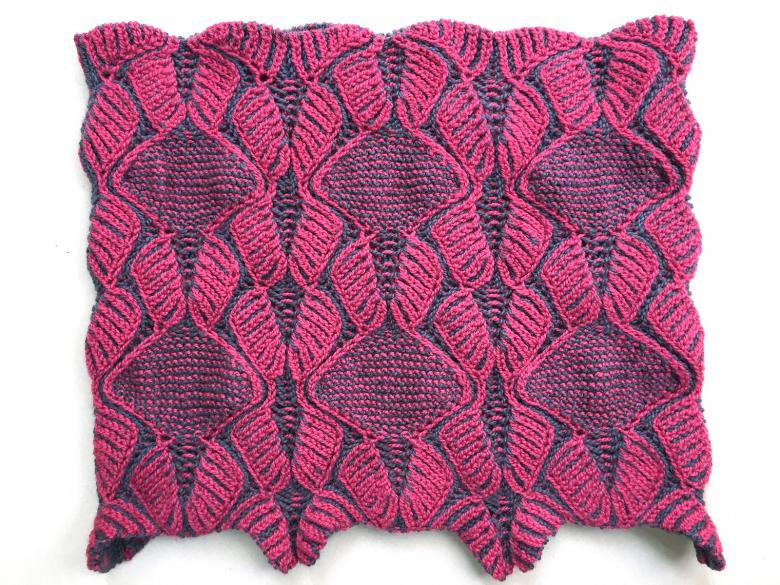
Knitting loops from the bottom row
This method of knitting in the technique of brioche is used less frequently. It is also called a puffed rubber band. The number of loops should also be odd. The first row is knit with a regular rhythm: one right, one wrong.
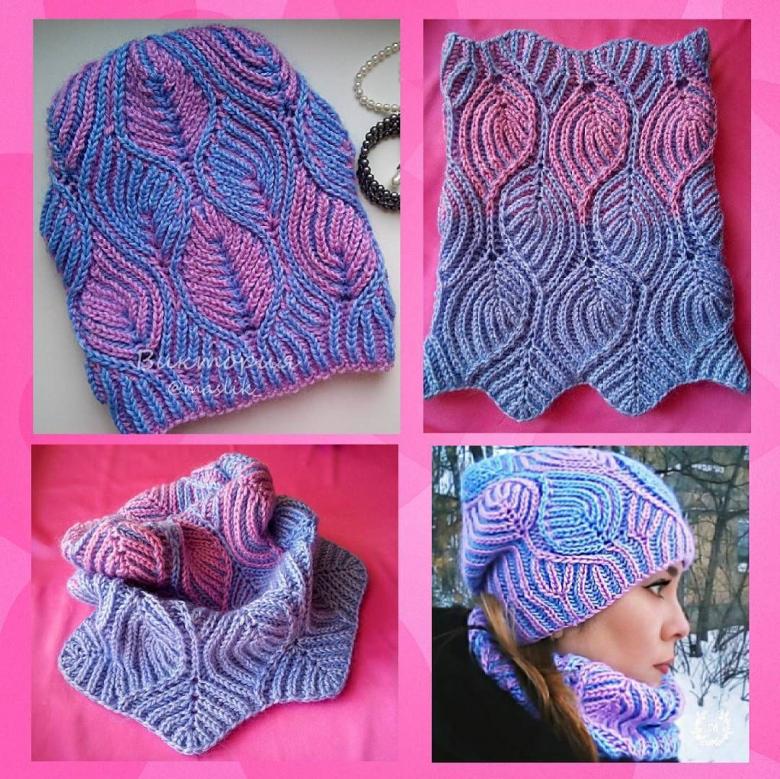
The second row is knit the same way, but in the front stitch the needle is introduced into the row below. The result is two threads in one stitch, which adds volume to the knitting.
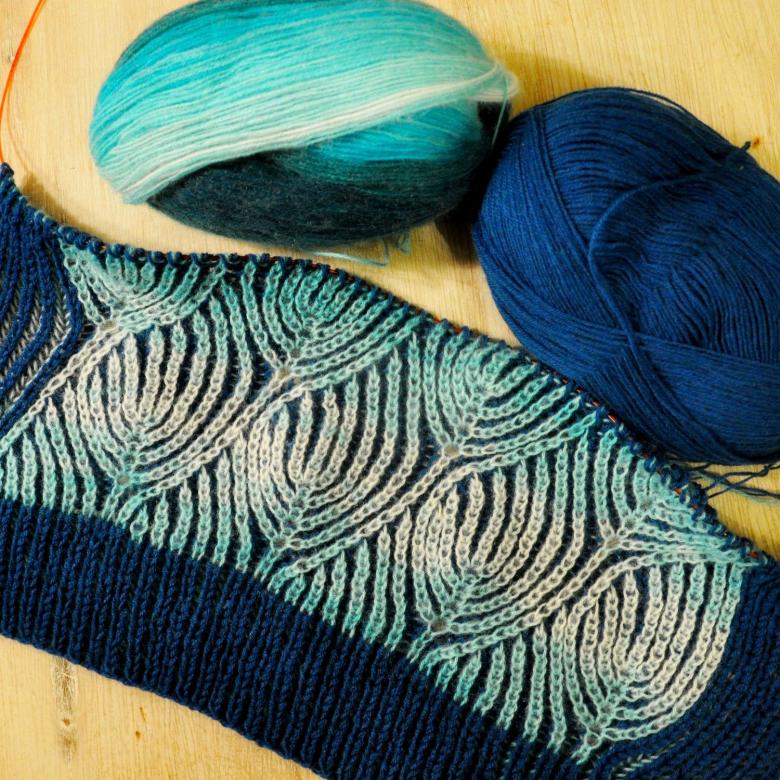
The result is the same knitting result. You can see this if you try knitting two samples with different techniques.
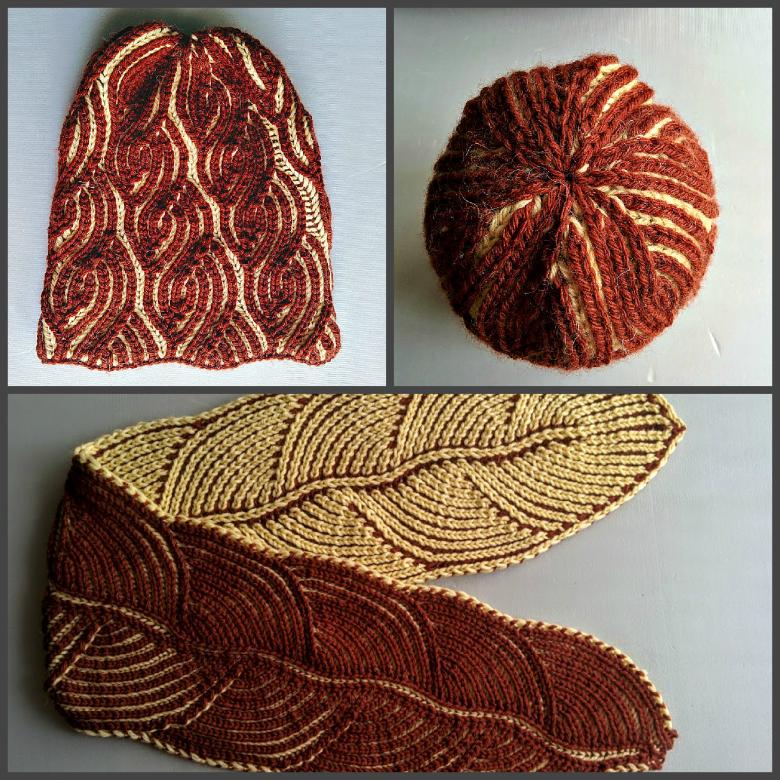
Having mastered knitting brioche in different variations, you can try to knit yourself a hat and a scarf. These are the easiest products with which a beginner cope without difficulty.

